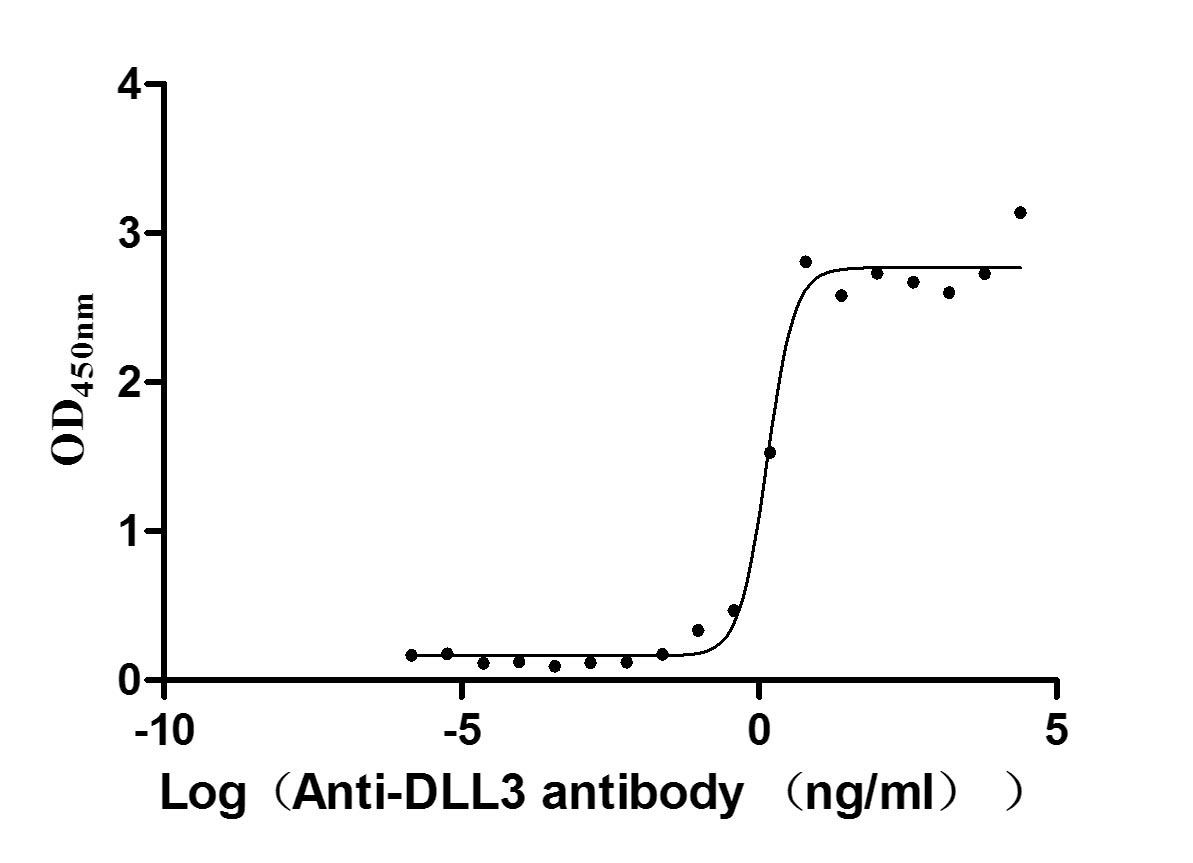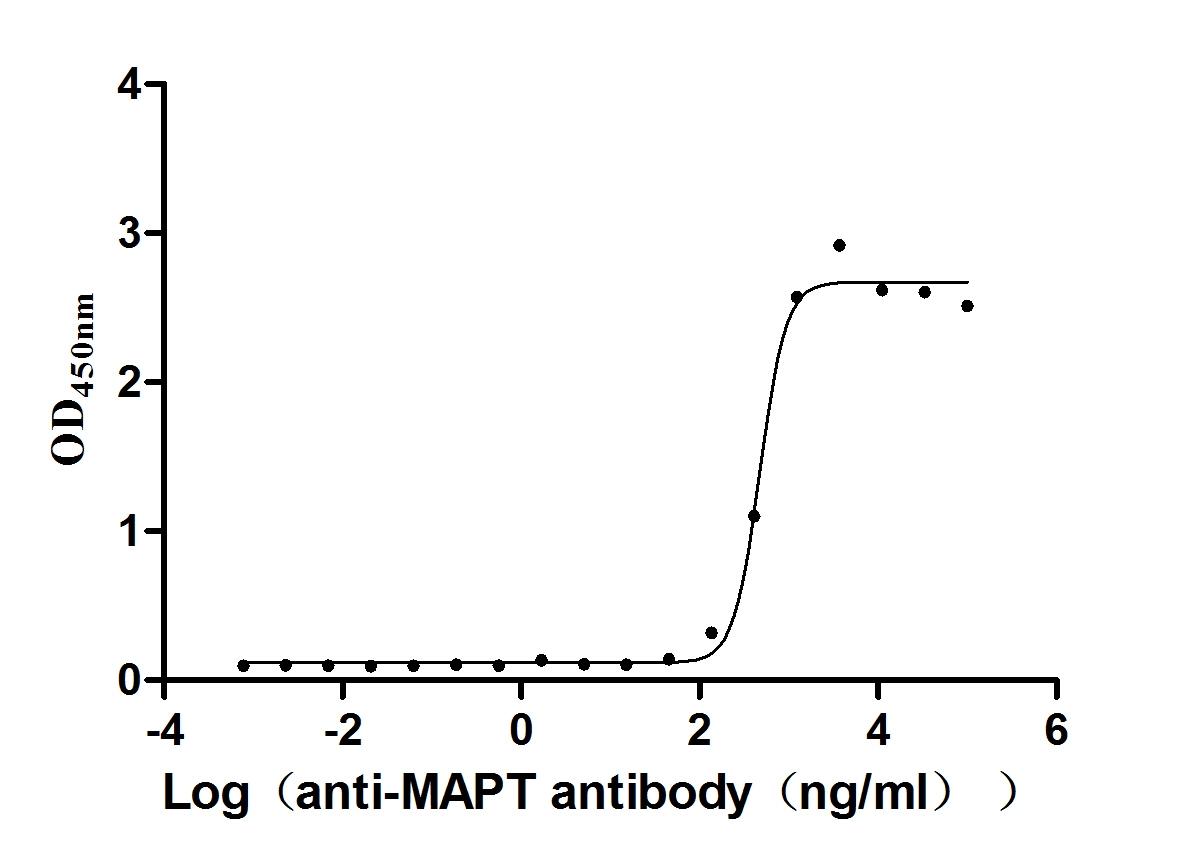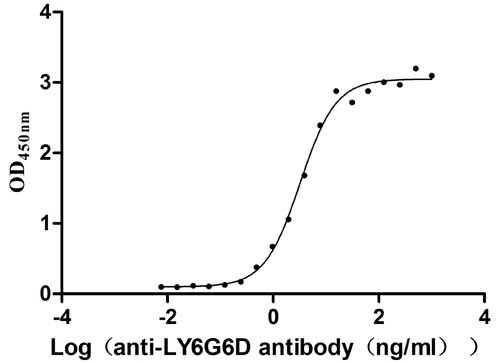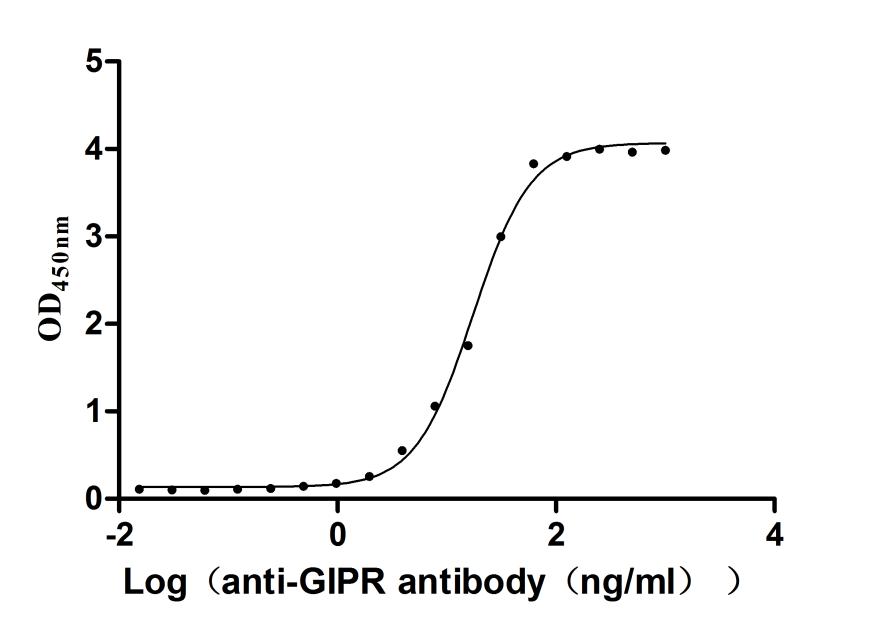Recombinant Human Synphilin-1 (SNCAIP), partial
-
中文名稱:人SNCAIP重組蛋白
-
貨號(hào):CSB-YP896546HU
-
規(guī)格:
-
來(lái)源:Yeast
-
其他:
-
中文名稱:人SNCAIP重組蛋白
-
貨號(hào):CSB-EP896546HU
-
規(guī)格:
-
來(lái)源:E.coli
-
其他:
-
中文名稱:人SNCAIP重組蛋白
-
貨號(hào):CSB-EP896546HU-B
-
規(guī)格:
-
來(lái)源:E.coli
-
共軛:Avi-tag Biotinylated
E. coli biotin ligase (BirA) is highly specific in covalently attaching biotin to the 15 amino acid AviTag peptide. This recombinant protein was biotinylated in vivo by AviTag-BirA technology, which method is BriA catalyzes amide linkage between the biotin and the specific lysine of the AviTag.
-
其他:
-
中文名稱:人SNCAIP重組蛋白
-
貨號(hào):CSB-BP896546HU
-
規(guī)格:
-
來(lái)源:Baculovirus
-
其他:
-
中文名稱:人SNCAIP重組蛋白
-
貨號(hào):CSB-MP896546HU
-
規(guī)格:
-
來(lái)源:Mammalian cell
-
其他:
產(chǎn)品詳情
-
純度:>85% (SDS-PAGE)
-
基因名:SNCAIP
-
Uniprot No.:
-
別名:Alpha synuclein interacting protein; Alpha-synuclein-interacting protein; MGC39814; SNCAIP; SNCAP_HUMAN; Sph1; Synphilin-1; Synphilin1; Synuclein alpha interacting protein (synphilin); Synuclein alpha interacting protein; SYPH 1
-
種屬:Homo sapiens (Human)
-
蛋白長(zhǎng)度:Partial
-
蛋白標(biāo)簽:Tag?type?will?be?determined?during?the?manufacturing?process.
The tag type will be determined during production process. If you have specified tag type, please tell us and we will develop the specified tag preferentially. -
產(chǎn)品提供形式:Lyophilized powder
Note: We will preferentially ship the format that we have in stock, however, if you have any special requirement for the format, please remark your requirement when placing the order, we will prepare according to your demand. -
復(fù)溶:We recommend that this vial be briefly centrifuged prior to opening to bring the contents to the bottom. Please reconstitute protein in deionized sterile water to a concentration of 0.1-1.0 mg/mL.We recommend to add 5-50% of glycerol (final concentration) and aliquot for long-term storage at -20℃/-80℃. Our default final concentration of glycerol is 50%. Customers could use it as reference.
-
儲(chǔ)存條件:Store at -20°C/-80°C upon receipt, aliquoting is necessary for mutiple use. Avoid repeated freeze-thaw cycles.
-
保質(zhì)期:The shelf life is related to many factors, storage state, buffer ingredients, storage temperature and the stability of the protein itself.
Generally, the shelf life of liquid form is 6 months at -20°C/-80°C. The shelf life of lyophilized form is 12 months at -20°C/-80°C. -
貨期:Delivery time may differ from different purchasing way or location, please kindly consult your local distributors for specific delivery time.Note: All of our proteins are default shipped with normal blue ice packs, if you request to ship with dry ice, please communicate with us in advance and extra fees will be charged.
-
注意事項(xiàng):Repeated freezing and thawing is not recommended. Store working aliquots at 4°C for up to one week.
-
Datasheet :Please contact us to get it.
相關(guān)產(chǎn)品
靶點(diǎn)詳情
-
功能:Isoform 2 inhibits the ubiquitin ligase activity of SIAH1 and inhibits proteasomal degradation of target proteins. Isoform 2 inhibits autoubiquitination and proteasomal degradation of SIAH1, and thereby increases cellular levels of SIAH. Isoform 2 modulates SNCA monoubiquitination by SIAH1.
-
基因功能參考文獻(xiàn):
- Differential expression of synphilin-1 isoforms (and alpha-synuclein and parkin) was found in multiple system atrophy brains compared to control brain. PMID: 26465922
- Synphilin-1 binds ATP, but not CTP. PMID: 25545246
- Overexpression of human synphilin-1 in mice resulted in hyperphagia and obesity. PMID: 24829096
- Overexpression of SP1 in neurons, but not peripheral cells, increased the body weight of flies compared with that of non-transgenic controls. SP1 increased food intake but did not affect locomotor activity PMID: 22828940
- Although serine-129 phosphorylation of alpha-synuclein facilitates tubulin polymerization promoting protein (TPPP)-mediated alpha-SYN oligomerization, this modification does not seem to play an inevitable role in the early step of alpha-SYN oligomer formation. PMID: 20849899
- Mutation screening of SNCAIP identifies novel sequence variants using a bioinformatic approach; further studies are necessary to determine their possible functional consequences in South African patients with Parkinson's disease. PMID: 21344240
- Neuronal survival factor MEF2D is decreased in human and experimental Parkinson's disease, a decrease that is specifically associated with alpha-synuclein accumulation and aggregation. PMID: 20816781
- Synphilin-1 inhibits alpha-synuclein degradation by the proteasome. PMID: 21103907
- Knockdown of Herp gene unexpectedly facilitated the degradation of synphilin-1, and improved cell viability during proteasomal inhibition. PMID: 20604806
- Data show that periphilin displays an overlapping expression pattern with synphilin-1 in cellular and animal models and in Lewy bodies of Parkinson's disease (PD) patients, and support involvement of periphilin in PD. PMID: 19730898
- expression of synphilin-1 shortens N1E-115 cell division doubling time, promotes neurite outgrowth, and protects against Rotenone-induced toxicity; synphilin-1 displays a neurotrophic effect in vitro, may play a neuroprotective role in Parkinson's disease PMID: 19857556
- alpha-synuclein-synphilin-1 interaction significantly promotes the formation of cytoplasmic alpha-synuclein inclusions, which may have implications for Lewy body formation in neural cells PMID: 19762560
- The amino acid sequence of synphilin-1 shows extensive homology with its human counterpart, especially in regions containing ankyrin-like motifs and the coiled-coil domain. Expression of mouse synphilin-1 in tissues is similar to its human counterpart. PMID: 11958831
- results suggest that synphilin-1 has an important role in the formation of aggregates and cytotoxicity in Parkinson disease and that Dorfin may be involved in the pathogenic process by ubiquitylation of synphilin-1 PMID: 12750386
- a causative role of the R621C mutation in the synphilin-1 gene in Parkinson's disease PMID: 12761037
- Changes in synuclein expression presage neurodegeneration in a Drosophila model of Parkinson disease. PMID: 12915459
- Siah-1 was found to abrogate the inhibitory effects of synphilin-1 on dopamine release PMID: 14506261
- role of aggresomes in cell viability was addressed in the context of over-expressing alpha-synuclein and its interacting partner synphilin-1 PMID: 14627698
- Casein kinase II (CKII) phosphorylates synphilin-1; beta subunit of this enzyme complex binds to synphilin-1. CKII-mediated phosphorylation of synphilin-1, rather than alpha-synuclein, modulates the aggregation into inclusion bodies. PMID: 14645218
- role of synphilin-1 in synaptic function and protein degradation and in the molecular mechanisms leading to neurodegeneration in Parkinson disease PMID: 15322916
- Parkin is a dual-function ubiquitin ligase. K63-linked ubiquitination of synphilin-1 by parkin may be involved in the formation of Lewy body inclusions associated with Parkinson disease. PMID: 15728840
- We confirm that synphilin-1 and parkin are components of majority of Lewy Bodies in Parkinson's disease and that both proteins are susceptible to proteasomal degradation. PMID: 15894486
- GSK3beta modulates synphilin-1 ubiquitylation and cellular inclusion formation by SIAH PMID: 16174773
- Synphilin-1A may contribute to neuronal degeneration in alpha-synuclein mutations and provides insights into the role of inclusion bodies in neurodegenerative disorders. PMID: 16595633
- These results suggest that NUB1 indeed targets synphilin-1 to the proteasome for its efficient degradation, which, because of the resultant reduction in synphilin-1, suppresses the formation of synphilin-1-positive inclusions. PMID: 16877356
- a novel specific interaction of synphilin-1 with the regulatory proteasomal protein S6 ATPase (tbp7) in aggresome-like intracytoplasmic inclusions PMID: 17327361
- These findings suggest that parkin and synphilin-1 isoform expression changes play a significant role in the pathogenesis of LB diseases. PMID: 17467279
- review:Isoform Synphilin-1A inclusions recruit both alpha-synuclein and synphilin-1. Aggregation of synphilin-1 and synphilin-1A seems to be protective to cells PMID: 17982729
- specific effects of C621 mutant synphilin-1 on gene expression that correlate with its role as a susceptibility factor in Parkinson's disease PMID: 18292964
- All four alpha-synuclein isoforms were affected in dementia with LB (Lewy bodies), most parkin transcript variants in common LB disease, and all synphilin-1 isoforms in Parkinson disease. PMID: 18335262
- We found no evidence for association between genetic variability in synphilin-1 and Parkinson's disease PMID: 18366718
- translocation to aggresomes required a special aggresome-targeting signal within the sequence of synphilin 1, an ankyrin-like repeat domain. PMID: 18635553
- Synphilin-1 might be involved in motor function, and its accumulation in the central nervous system can cause motor impairments. PMID: 18782602
- synphilin-1A has a novel role as a regulator of SIAH activity, modulating alpha-synuclein, and formation of Lewy body-like inclusions PMID: 19224863
顯示更多
收起更多
-
相關(guān)疾病:Parkinson disease (PARK)
-
亞細(xì)胞定位:Cytoplasm. Note=Detected in cytoplasmic inclusion bodies, together with SNCA.
-
組織特異性:Detected in brain (at protein level). Widely expressed, with highest levels in brain, heart and placenta.
-
數(shù)據(jù)庫(kù)鏈接:
Most popular with customers
-
Recombinant Human Delta-like protein 3 (DLL3), partial (Active)
Express system: Mammalian cell
Species: Homo sapiens (Human)
-
Recombinant Human Claudin-18.2 (CLDN18.2)-VLPs (Active)
Express system: Mammalian cell
Species: Homo sapiens (Human)
-
Recombinant Mouse Microtubule-associated protein tau (Mapt) (Active)
Express system: Mammalian cell
Species: Mus musculus (Mouse)
-
Recombinant Human Angiopoietin-2 (ANGPT2) (Active)
Express system: Mammalian cell
Species: Homo sapiens (Human)
-
Recombinant Human Lymphocyte antigen 6 complex locus protein G6d (LY6G6D) (Active)
Express system: Yeast
Species: Homo sapiens (Human)
-
Recombinant Human Gastric inhibitory polypeptide receptor(GIPR),partial (Active)
Express system: Mammalian cell
Species: Homo sapiens (Human)
-
Express system: Mammalian cell
Species: Homo sapiens (Human)



-AC1.jpg)

-AC1.jpg)












